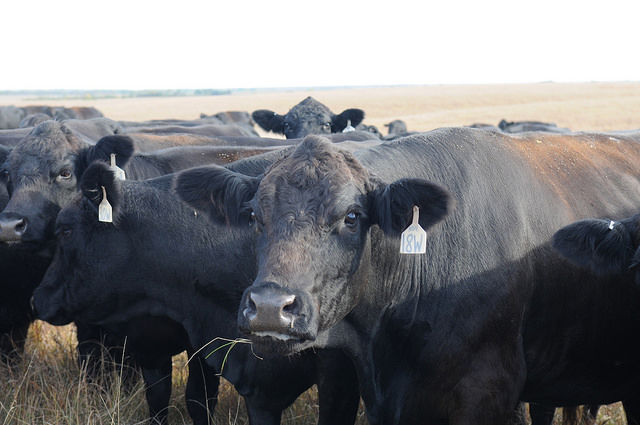One of the most important tools for livestock producers is a sharp No. 2 pencil.
The pencil and some basic arithmetic can help take the emotion out of desperate measures to find feed. When you do the math, buying grain or other alternative feeds may be the best bang for the buck, says University of Missouri Extension agricultural business specialist Wesley Tucker.
“Many people think their only options are to pay whatever they must to buy hay or sell their cows,” says Tucker. Not so, he says.
Producers actually have multiple options: 1. Buy high-priced hay; 2. Limit feeding of hay on hand and make up the difference in grain; 3. Buy straw and supplement with grain; 4. Buy corn silage/baleage from row crop neighbors.
Some producers may not have access to every option, or it may not work for them, says Tucker. Producers must decide for themselves what works with the time, manpower, equipment and other resources they have.
Tucker and MU Extension beef nutrition specialist Eric Bailey say producers might save money by buying grain and investing more elbow grease to weather drought-related shortages.
First, ask what you are getting for your money by calculating the cost per pound of total digestible nutrients. Measuring TDN is akin to reading the calories on the back of a candy wrapper. It represents energy in the feed. Compare each alternative on price for a pound of TDN to identify under- and over-valued feeds, says Bailey.
When you put pencil to paper, you might find differences in price per pound of TDN among forage sources or that grain might be cheaper per pound of TDN. Keep in mind, too, the bonus of grain having less waste compared to forages. This allows you to feed what hay you have and fill the gap with grain.
Consider reducing hay intake to 10 to 15 pounds per cow daily, and make up the difference with grain, depending on pregnancy and lactation status. Cows nursing young calves need the most feed.
Don’t be fooled by dollar-per-bale prices, says Tucker. Not all bales are created equal. When pricing, always consider size and weight. “A 4-by-5 bale of hay may only weigh 750 to 800 pounds while a 5-by-6 bale weighs considerably more. When possible, price hay by the ton instead of per bale, because it’s not always apples-to-apples,” says Tucker.
If you are lucky enough to have hay or can find hay to buy within your budget, save by not wasting it. See the MU Extension news release “Don’t waste precious hay during drought” at http://muext.us/n6123 for ways to make the most of it.
Plan to roll up your shirtsleeves to save money, says Tucker. Invest in infrastructure and prepare to put in extra time. Feeding grain is more labor-intensive and requires some infrastructure, but the savings will likely pay off.
This might be a good time to invest in a bulk bin to avoid carrying individual sacks to the trough. Also, buy a cake feeder instead of carrying individual buckets. “These investments make an operation more efficient – and save your back,” says Bailey.




